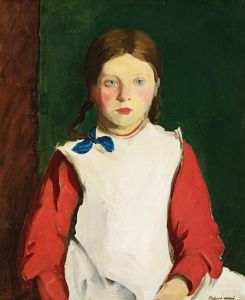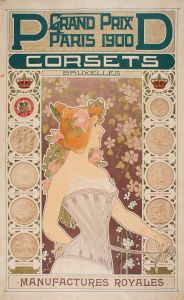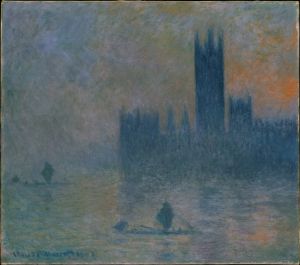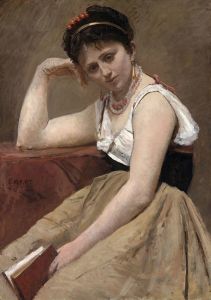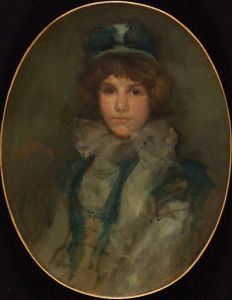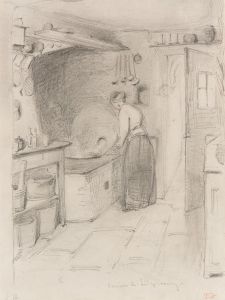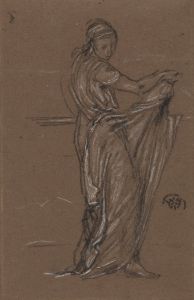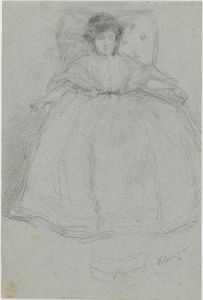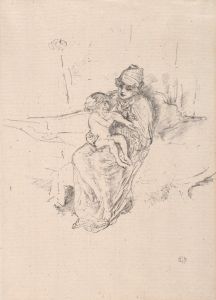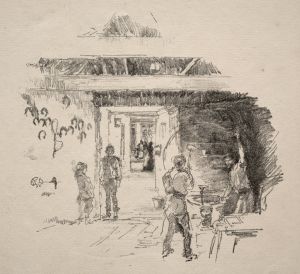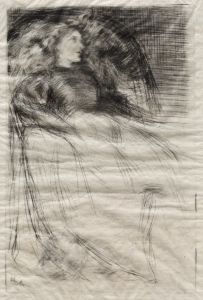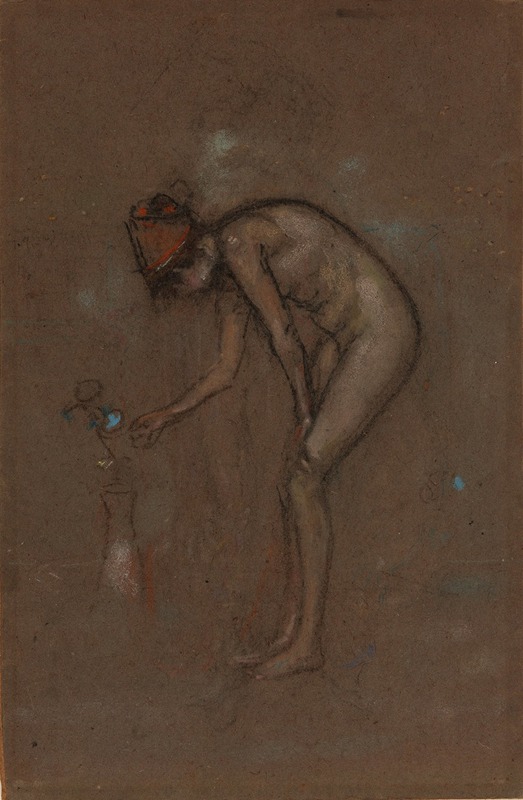
A Violet Note
A hand-painted replica of James Abbott McNeill Whistler’s masterpiece A Violet Note, meticulously crafted by professional artists to capture the true essence of the original. Each piece is created with museum-quality canvas and rare mineral pigments, carefully painted by experienced artists with delicate brushstrokes and rich, layered colors to perfectly recreate the texture of the original artwork. Unlike machine-printed reproductions, this hand-painted version brings the painting to life, infused with the artist’s emotions and skill in every stroke. Whether for personal collection or home decoration, it instantly elevates the artistic atmosphere of any space.
James Abbott McNeill Whistler was an American artist known for his significant contributions to the art world during the late 19th century. He is best recognized for his paintings, etchings, and lithographs, which often emphasized mood and atmosphere over detailed representation. Whistler's work is characterized by his innovative use of color and his interest in the aesthetic movement, which prioritized beauty and harmony in art.
"A Violet Note" is one of Whistler's lesser-known works, and there is limited information available about this specific painting. Whistler's oeuvre often included works with musical titles, reflecting his belief in the connection between art and music. This approach is evident in his famous "Nocturnes" series, where he used musical terminology to convey the mood and tone of his paintings. It is possible that "A Violet Note" follows a similar thematic approach, focusing on the interplay of color and emotion.
Whistler's artistic philosophy was heavily influenced by the concept of "art for art's sake," which argued that the value of art lies in its beauty and not in its narrative or moral message. This philosophy is reflected in his use of color and composition to evoke a particular atmosphere or feeling, rather than to depict a specific scene or story. Whistler's work often featured subtle color palettes and delicate brushwork, creating a sense of harmony and balance.
Throughout his career, Whistler was known for his distinctive style and his ability to capture the essence of his subjects with minimal detail. He often employed a limited color palette, using shades of gray, blue, and violet to create a sense of depth and mood. This approach is evident in many of his works, where he sought to convey the beauty of the natural world through abstract forms and muted tones.
Whistler's influence on the art world was significant, and his work paved the way for future movements such as Impressionism and Symbolism. His emphasis on mood and atmosphere, as well as his innovative use of color, inspired many artists of his time and continues to be appreciated by art enthusiasts today.
While specific details about "A Violet Note" are scarce, it is likely that the painting embodies Whistler's artistic principles, focusing on the interplay of color and emotion to create a harmonious composition. As with many of his works, the painting would have been intended to evoke a particular mood or feeling, inviting viewers to appreciate the beauty of the artwork on its own terms.
In conclusion, James Abbott McNeill Whistler's "A Violet Note" remains an enigmatic piece within his body of work. Although detailed information about the painting is limited, it is consistent with Whistler's artistic philosophy and style, emphasizing the aesthetic qualities of color and composition. Whistler's legacy as a pioneering artist continues to be celebrated, and his contributions to the art world remain influential to this day.





